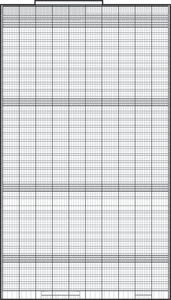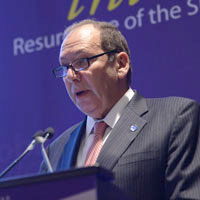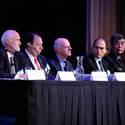Filter by
You must be a CTBUH Member to view this resource.

United Nations Secretariat Building
UN Headquarters, U.N. Building
Building
Completed
1953
Office
All-Steel
154.3 m / 506 ft
39
3
20
6.1 m/s
82,272 m² / 885,568 ft²
You must be a CTBUH Member to view this resource.
You must be a CTBUH Member to view this resource.
Construction Start
Completed
Retrofit Start
Retrofit End
You must be a CTBUH Member to view this resource.
Usually involved in the front end design, with a "typical" condition being that of a leadership role through either Schematic Design or Design Development, and then a monitoring role through the CD and CA phases.
Usually involved in the front end design, with a "typical" condition being that of a leadership role through either Schematic Design or Design Development, and then a monitoring role through the CD and CA phases.
The Design Engineer is usually involved in the front end design, typically taking the leadership role in the Schematic Design and Design Development, and then a monitoring role through the CD and CA phases.
The CTBUH lists a project manager when a specific firm has been commissioned to oversee this aspect of a tall building’s design/construction. When the project management efforts are handled by the developer, main contract, or architect, this field will be omitted.
The main contractor is the supervisory contractor of all construction work on a project, management of sub-contractors and vendors, etc. May be referred to as "Construction Manager," however, for consistency CTBUH uses the term "Main Contractor" exclusively.
Other Consultant refers to other organizations which provided significant consultation services for a building project (e.g. wind consultants, environmental consultants, fire and life safety consultants, etc).
These are firms that consult on the design of a building's façade. May often be referred to as "Cladding," "Envelope," "Exterior Wall," or "Curtain Wall" Consultant, however, for consistency CTBUH uses the term "Façade Consultant" exclusively.
2014 CTBUH Awards

26 October 2015 | New York City
Michael Adlerstein shares his insights into how the United Nations Secretariat Building, an aging icon of Mid-century Modernism, was renovated to meet the security, efficiency...

26 October 2015
Michael Alderstein, United Nations
Michael Adlerstein shares his insights into how the United Nations Secretariat Building, an aging icon of Mid-century Modernism, was renovated to meet the security, efficiency...
The Secretariat tower is arguably the most visible representation of postwar optimism and resiliency on the United Nations campus. It also embodies a mid-century Modernist merging of technology and form, as expressed in the remarkably slim north-south facing profiles and the crystalline east-west elevations.
When the multi-billion dollar renovation of the UN campus started, the Secretariat, which has never ceased to operate as a functional government building, was plagued by severely outdated fixtures, deficient life safety features, and a leaky curtain wall. It is estimated that the historic building had operated at least 35 years past its normal lifespan.
Key design strategies for increasing performance included the extensive redevelopment of the base building core and systems, including new elevator systems and mechanical infrastructure, new fire protection systems and code upgrades, disabled-access compliance, and asbestos abatement. Floor plate utilization was enhanced through the introduction of a new planning diagram. It also involved installing a better, more efficient envelope for insulation and blast protection.
The Secretariat was the first tall building to employ a suspended wall system. Its primary elevations were enclosed by free-hanging glazed facades. The new curtain wall was designed to look like it did when it first opened—sleek and taut, with its double-hung aluminum windows, glazed spandrel panels, and aluminum-clad steel mullions appearing as one continuous transparent form. The replaced wall’s appearance had been significantly altered after nearly 60 years of patches, caulkings, insulating and blast coatings, resulting in a patchwork appearance and a greenish hue.
To rectify this, the project team conducted extensive testing to replicate the visual appearance of the original building, including reflection patterns at different times of day. The work included spectral analysis of glass types to identify viable formulas, computer model simulation, and, ultimately, a full-scale mockup tested on the UN grounds.
The original curtain wall was demolished and replaced with a pressure-equalized system in sections, proceeding from bottom to top in each 10-story zone between the louvered mechanical levels. Unlike the original curtain wall, which had been attached to the concrete floor slabs, the new system is connected to the now-reinforced building frame via outrigger plates. To mimic the appearance of the original double-hung windows, the team strategically offset some of the aluminum extrusions. The new cladding incorporates performance enhancements, such as low-E coating and blast protection.
The new open floor plan challenges the closed culture propagated by the original cellular offices. Significantly more light and air now enter the interior. The open plan also affords more flexibility and efficient use of space in a rapidly growing organization; the Secretariat now serves 193 member-states, as compared to the original 50.
The open-plan daylighting scheme includes 1,981-millimeter-tall furniture-work walls that extend from perimeter columns, without blocking natural light. The ceiling is 2.4 meters high but gradually steps up to 2.9 meters at the windows, allowing for a circulation path around the core, while supporting the equitable distribution of mechanical services. Seventy-five percent of workspaces now have daylighting and views.
Overall, the resulting building is 50 percent more energy-efficient than it was before the renovation. Replacement was never an option due to the iconic nature of the tower; instead, the classic building was thoroughly renovated in place. In many ways, the Secretariat’s radical revitalization is more about rebirth than restoration.
2014 CTBUH Awards

26 October 2015 | New York City
Michael Adlerstein shares his insights into how the United Nations Secretariat Building, an aging icon of Mid-century Modernism, was renovated to meet the security, efficiency...

26 October 2015 | New York City
Michael Adlerstein of United Nations Capital Master Plan is interviewed by Chris Bentley during the 2015 CTBUH New York Conference at the Grand Hyatt New...

06 November 2014 | New York City
Dr. Peter Irwin, Founding Partner, RWDI Consulting Engineers, Michael Adlerstein, Assistant Secretary-General & Executive Director, United Nations Capital Master Plan, John Gering, Managing Partner, HLW...

06 November 2014 | New York City
When the multi-billion dollar renovation of the UN campus started, the Secretariat, which has never ceased to operate as a functional government building, was plagued...

06 November 2014 | New York City
Thursday, 6th November 2014. Chicago, USA. Michael Adlerstein, United Nations Capital Master Plan & John Gering, HLW International, discuss the retrofit of the United Nations...

06 November 2014 | New York City
Thursday, 6th November 2014. Chicago, USA. Michael Adlerstein, United Nations Capital Master Plan & John Gering, HLW International, discuss the retrofit of the United Nations...

19 September 2012 | New York City
The existing building stock in some regions accounts for nearly as much energy consumption and carbon emissions as the transportation and industrial sectors combined. Existing...
Subscribe below to receive periodic updates from CTBUH on the latest Tall Building and Urban news and CTBUH initiatives, including our monthly newsletter. Fields with a red asterisk (*) next to them are required.
View our privacy policy